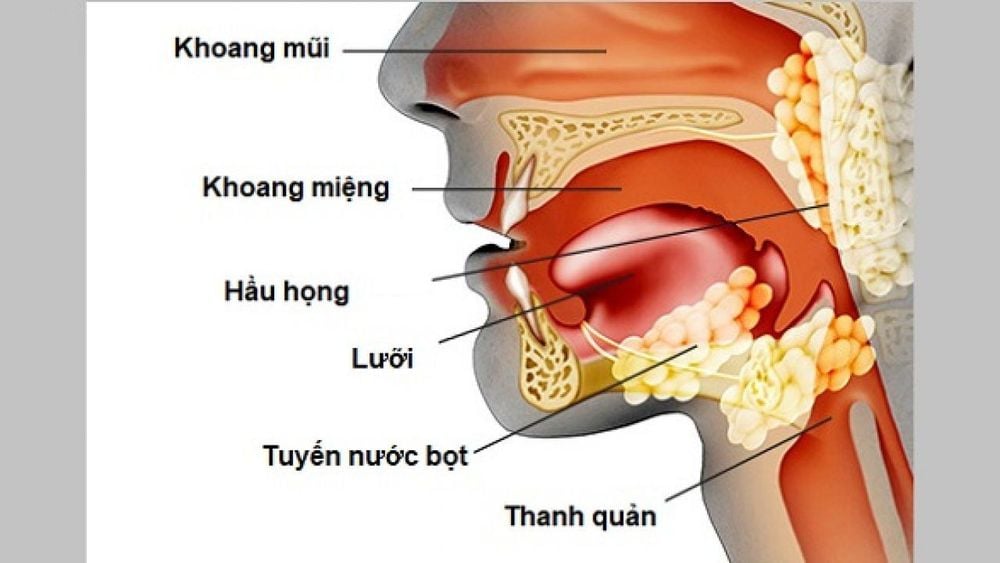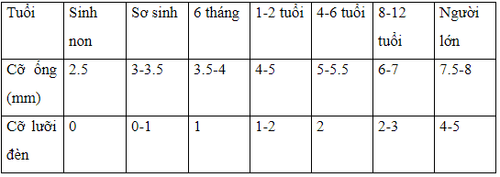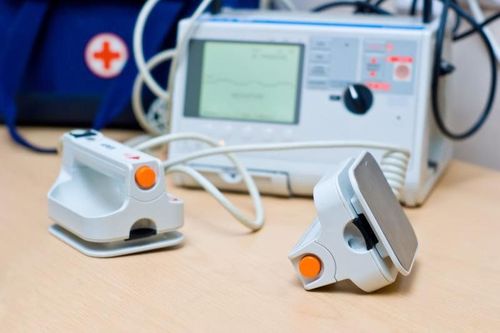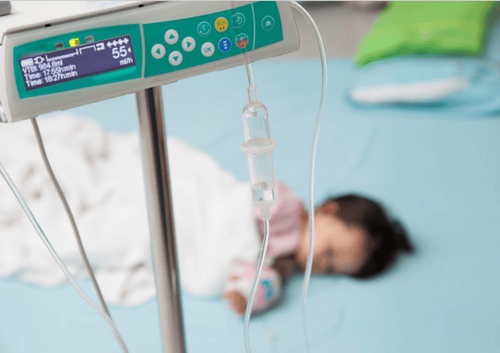This is an automatically translated article.
Endotracheal intubation is a technique used to rescue difficult airways, ensure ventilation of breathing rhythms, clear airways and avoid complications. Intubation technique is a difficult technique, requires highly skilled equipment and doctors, minimizing risks.
1. What is intubation?
Intubation is a medical resuscitation technique, aiming to clear the airway in cases of acute airway obstruction due to trauma, laryngospasm, edema, tumor, laryngeal infection. ,...
2. What are the benefits of intubation?
Maintain airway patency, provide high-concentration oxygen; Ensure adequate tidal volume is provided according to pre-set breathing rates prior to artificial ventilation; Provide PEEP (positive end-expiratory pressure), isolate the lung; Facilitating the suction of secretions and mucus while preventing aspiration of secretions from the pharynx, mouth, stomach, and upper respiratory tract; Create a route to administer drugs to resuscitate when an intravenous or intraosseous line cannot be established.
3. Risks of intubation procedure

Thủ thuật đặt nội khí quản có nguy cơ chấn thương hầu họng
Oropharyngeal trauma; Decreased blood oxygenation due to too long procedure time, or undetected endotracheal intubation. The complication rate of the procedure is increased if it is attempted in untrained cases or if the procedure is inexperienced. In the event that the vocal cords are not visible, the operator should use balloon squeezing through a mask or other airway opening device.
4. Indications for emergency intubation of difficult airways
Indications for intubation when:
Acute airway obstruction due to trauma, burns, foreign body, infection, angioedema in the upper respiratory tract or spasm, laryngeal tumor; Patients with head trauma, cerebrovascular accident, drug overdose or nervous system infection, leading to loss of protective airway reflexes; Respiratory failure leads to hypoxemia, increased CO2; Circulatory respiratory arrest. Head trauma patients should be intubated immediately when 1 of the following criteria:
GCS 8 Respiratory failure Loss of protective airway reflexes Spontaneous hyperventilation Arrhythmia such as apnea Indication for intubation Endotracheal intubation is not required immediately but may be necessary before moving the patient:
Significant impairment of consciousness Major bleeding into the mouth or pharyngeal cavity Bilateral jaw fractures Major convulsions
5. Intubation procedure

Hình ảnh mô tả quy trình đặt nội khí quản
Preparation The patient should be positioned and assessed as follows:
Establish an intravenous or skeletal line; Evaluation of the possibility of intubation based on anatomy; Provide pre-intubation oxygen using normal breathing for 3 minutes or more with FiO2, usually closer to 1 or 8 deep breaths in 1.5 minutes; Remove dentures (if any). Prepare tools including:
Check necessary equipment: endotracheal tube, guide rod, bulb Fit the lamp handle to the lamp blade Select the endotracheal tube with the appropriate size Select the blade of the appropriate type and size Instrument Ball Check The endotracheal tube and blade dimensions are as follows:

Intubation technique Lubricate and fix the guide rod inside the endotracheal tube; Place the patient's head in a neutral position, keeping the neck axis straight to straighten the oropharyngeal-pharyngeal axis; Use the thumb - index finger technique to open the patient's mouth; Gently place the lamp blade on the right side of the patient's mouth, move the tongue to the left, raise the epiglottis; Observe the opening of the glottis and the vocal cords; Aspirate secretions if present in the airway with the right hand; Insert the endotracheal tube with the right hand and observe as the tube passes through the vocal cords; Inflate the endotracheal balloon (approximately 5 - 10 mL of air); Take out the lamp blade; Hold the endotracheal tube with one hand and withdraw the guide rod with the other hand; Place a bite deterrent; Connect the breathing tube to the endotracheal tube; Squeeze the breathing balloon, while observing the movement of the chest; Assess the position of the endotracheal tube; Use a cloth to fix the endotracheal tube; Ventilate, continue to monitor endotracheal tube position and patient's condition (by clinical or straight chest X-ray); If you are massaging the heart outside the chest, minimize interruptions. Insert the blade of the lamp, leaving the endotracheal tube ready as soon as cardiac massage is stopped. Observe the vocal cords and insert the endotracheal tube for no more than 10 seconds. As soon as the endotracheal tube passes between the 2 vocal cords, return to massage the heart; If intubation is not possible within 30 seconds, continue ventilation by squeezing the balloon through a mask with 100% oxygen, then attempt to re-intubate for 20-30 seconds. Patient SpO2 should be kept > 95% at all times; The appropriate depth of the endotracheal tube is 23cm at the dental arch or corner of the mouth for male patients and 21-22cm for female patients. On radiographs, observation of the endotracheal tube tip should be 2-7 cm above the carina, preferably 4-7 cm above the carina with the head and neck in the neutral position; Balloon insert: optimal cuff pressure is in the range of 20-30 cmH2O.
6. Signs of possible difficulty in breathing

Viêm thanh thiệt là dấu hiệu có khả năng đường thở khó
Difficulty tilting the neck: arthritis, trauma or previous surgery; Anatomical abnormalities: small mouth, full neck, large tongue, high palate, lower jaw, obesity; Mouth cannot be opened wide; stridor or other signs of upper respiratory tract infection such as: epiglottitis , burning or infection of the larynx; Trauma to the larynx or trachea; Congenital deformity of the head, face and neck. It can be seen that emergency intubation for difficult airways is not a simple technique, the wrong position of the endotracheal tube can cause serious consequences, causing the patient to die. Therefore, only perform this technique with a trained physician, with a well-trained support team.
Vinmec International General Hospital is a prestigious facility with a quality medical team that is highly appreciated by experts, experienced, good technology, good qualifications, dedicated to the profession. The system of modern and advanced equipment helps the process of emergency, diagnosis and treatment of diseases achieve high efficiency.
To register for examination and treatment at Vinmec International General Hospital, you can contact the nationwide Vinmec Health System Hotline, or register online HERE.













